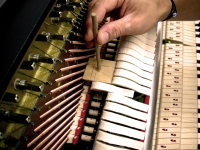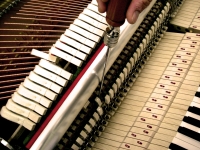Service
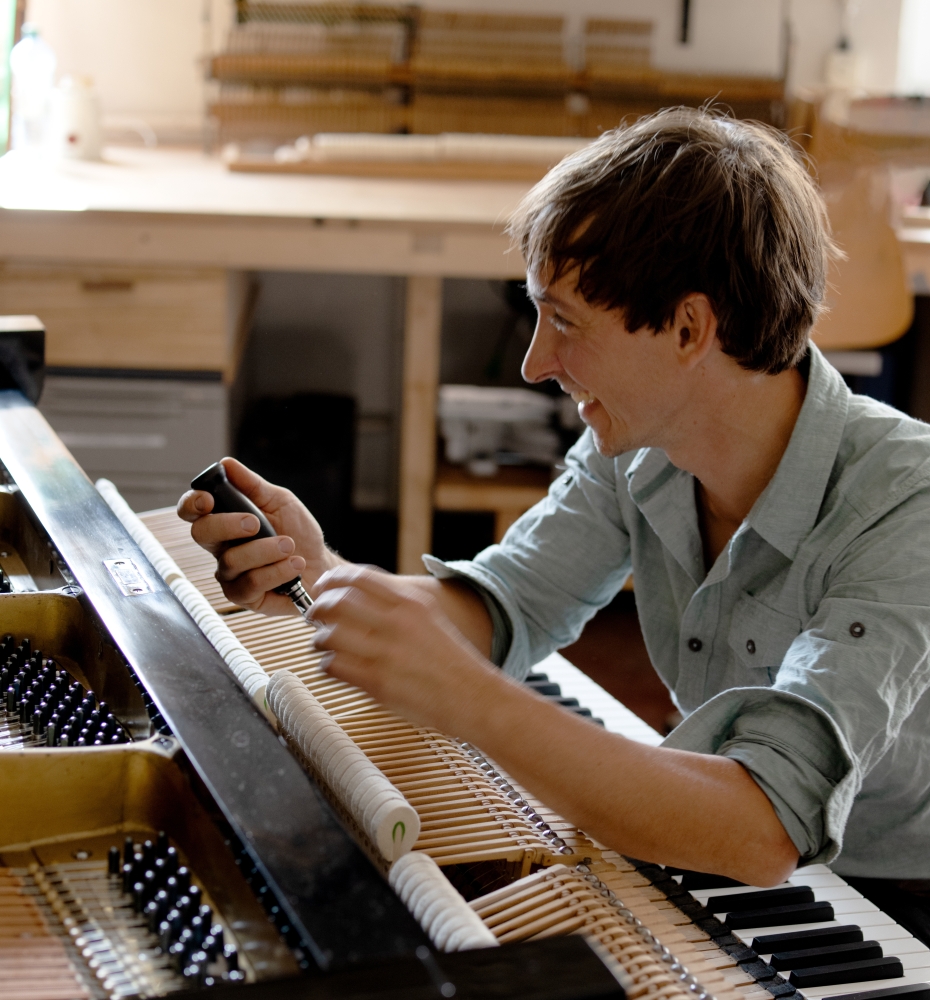
Action reconditioning
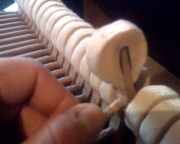
The action is the mechanical part of the piano that transfers the motion of the fingers on the keys to the hammers, that strike the strings. A perfect functionality and well adjusted regulation of the action are indispensible for a good feel of the piano. Is the piano played over many years, it looses continuity regarding the feel and sound. Thereby, the pleasure of playing the instrument often decreases, because the musical imagination of the player can not be sufficiently transferred through the piano. This can be changed with a systematic inspection of all parts and a careful regulation of the action as well as reshaping and voicing of the hammers. After an action overhaul, the keyboard and action are back in their technical original condition.
The following steps are usually included:
- careful inspection of the action parts (i.e. wooden parts, felts, leathers, center pins, screws etc.) and their functionality
- repairs / replacement of wear parts
- complete cleaning of the inside of the piano
- tighten screws
- treatment of the hammer felts (either refelting or reshaping (to remove string grooves), re-adjusting)
- reviewing of the dampers and renewing the damper felts, if necessary
- complete regulation of the action
- tuning
- voicing
Contact me for an inspection appointment and I will let you know about the condition of your instrument and discuss the possible steps with you. Afterwards, I can calculate a conrete offer for the repairs. The inpection can be free of charge as part of a tuning appointment.
Complete overhaul
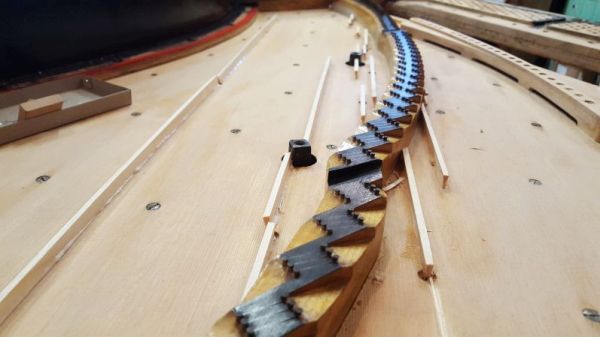
A complete overhaul on an upright or grand piano is a legally defined term. It contains the repairing of all parts in an acoustic instrument, which means complete technical as well as a complete surface overhaul.
The "inside" will be completely restored and wear parts like hammer heads, dampers, key felts etc. will be renewed. Also the acoustic body of the instrument will be repaired, which includes soundboard / bridge repairs, restringing / repinning an also renewing the pinblock, when necessary. The technical overhaul aims to bring back the functionality of a new instrument.
The surface overhaul contains the production of a surface finish comparable to a new instrument.
Make an appointment for an inspection and I will advise you about the necessary steps and give you a detailled cost overview.
Voicing
In the profession of piano making (and restoring), voicing means the adjustment of the sound character as well as the dynamic range of an instrument. The sound quality of a piano depends on many different factors, for example the condition and tension of the soundboard, quality, condition and measurements of the strings, the construction of the iron frame etc..
 Depending on the tonal idea of the musician, a certain dynamic range as well as the changing of the sound color from ppp (very low volume) to fff (very high volume) is required. While playing the instrument very softly, warmth, assertiveness and tone length are demanded whereas the playing in forte should produce more partial tones that causes a clear, brilliant and "open" sound. This is what the piano technician achieves with, for example, the treatment of the hammer felts.
Depending on the tonal idea of the musician, a certain dynamic range as well as the changing of the sound color from ppp (very low volume) to fff (very high volume) is required. While playing the instrument very softly, warmth, assertiveness and tone length are demanded whereas the playing in forte should produce more partial tones that causes a clear, brilliant and "open" sound. This is what the piano technician achieves with, for example, the treatment of the hammer felts.
If a piano is played constantly for some time, the hammer felts get harder and the sound is getting more screamy and undynamic. This can damp down the musician's pleasure and capability of expression while playing. Voicing means pre-needling the hammerfelts with a voicing tool, then reshaping them with sandpaper and finally balancing it, so that each note from the very low bass to the highest treble has the same volume, sound character and dynamic range. Hammerfelts that produce a too bright/metallic sound can be needled, and hammers that are to soft and dull can be impregnated with lacquer to become brighter.
The voicing of a piano should allways be done in the room, where it finaly stands, because room acoustic has a high influence on it.
Tuning and pitch raising
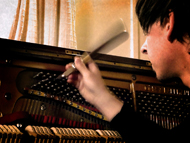
A piano requires maintenance even if it is not played very often. The most frequent part of the service is tuning. The usage, as well as the changing of the humidity during the seasons are the main reasons, why a piano becomes out of tune. This makes it essential to have a tuning made every six - twelve months.
Modern pianos are constructed to have the best tone at a standard pitch of 440 - 442 Hz. If the instrument hasn't been tuned for a long period, the pitch descends. In this case, it is necessary to do a pitch raise to get back to the standard pitch. Depending on how far it has gone below, a pitch raise and a subsequent tuning can be done in one visit, or the tuning may be scheduled for 2-3 weeks later.
Your piano will be tuned equally tempered by ear.
Restringing / repinnig

For several reasons it can be necessary to install new strings or tuning pins in an old instrument. Piano strings consist of a special manufactured steel wire. In contact with water (for example high humidity), strings become rusty after a while, which causes an unclean, dull sound and also cracking of single strings while playing / tuning.
I do complete restringing, as well as the changing of single strings. New strings are often a huge benefit to the sound of the piano. With special formulas, I am able to re- calculate the measurements of trebble and bass strings to optimize their sound and also to achieve a clean and even voicing from the very low bass to the high treble strings.
Old pianos, which still have the original pins and strings often get to a point, where they get quickly out of tune or can't even be tuned anymore. This is mainly caused by loose pins. If the pin block is still intact, it is possible to remove these pins and put new, thicker pins instead to achieve a firm grip. Thereby, the lifespan of the piano can be increased to many more decades.
Make an inspection appointment to get advice about the feasibilty and also a custumized offer for the restringing or repinning of your instrument.

Purchase advice
You are planning to buy a piano or grand piano and you're not sure if it is worth the price? Be safe and let it be rated before investing the money perhaps in the wrong instrument. Privat sellers often don't know the condition of their instrument themselves. I will carefully look through all angles of the inside and give you a detailed evaluation about the condition.
Installation of the KORG Silent System
You need to practice very often and also want to have the possibility to play at night without disturbing neighbours or cohabitants? In that case, I recommend to install a KORG Silent System into your piano. With this, you will have a perfect combination of an acoustic and electronic instrument, which enables you to play in silent mode with headphones. Also you are able to connect the keyboard via USB or MIDI to your audio interface or any digital audio workstation.
Through a lever, that is invisibly installed under the keyboard, the piano will be switched to silent mode. The hammer movement is then stopped before it hits the strings and the sound will be generated through a light sensor under the keys. The light signal will be transferred into MIDI information and forwarded to a sampler. This machine will provide many different sounds like organ, flutes, harpsichord and the possibility to record your own music.
Please contact me for a counseling concerning price and feasibility.

